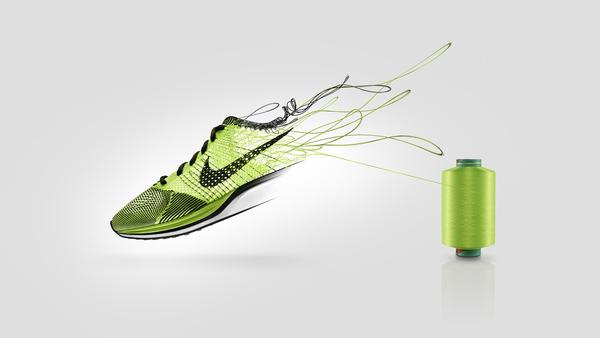Nike
Nike has been focusing on sustainability for a couple of years now. To list a few of the ‘green’ projects that the company undertakes:
- The Nike Materials Sustainability Index (Nike MSI).You can trace the environmental impact of every material included in this database. The various materials are ranked according to their sustainability profiles with the help of the Nike MSI Score. Nike itself has been using the tool in their manufacturing process since 2011, resulting in products made from more sustainable material.
- In 2013, Nike released the MAKING app, which is based on the MSI. This tool is meant to inspire designers and creators to make better choices in the materials they use and to make well-informed decisions. The app evaluates the impact of materials in the following areas: chemistry, energy/greenhouse gases, water/land and waste.
- The FlyKnit shoe is another interesting project. The upper is knitted in one piece, making the shoe practically seamless. At the same time, the upper allows the skin to breathe. The ‘knitwear’ consists of two different threads, with which a certain firmness can be created in the necessary areas.
- Yet another project entails the use of recycled polyester made from salvaged plastic bottles to make high-performance clothes and shoes. Plastic bottle bits are melted to produce the new fabric. The process uses about 30% less energy as compared to the production of normal polyester.
- In 2013, Nike opened its first waterless dye factory which relies on high-tech equipment to eliminate water as well as certain chemicals from the dyeing process. The new technology, called ColorDry, uses recyclable CO2 as a sustainable alternative to the traditional process, which requires tons of water. All of this is a direct consequence of Nike’s strategic investment in the Dutch start-up DyeCoo, the company that developed the technology to replace water, normally used for dyeing, with recyclable CO2.
- And finally there’s Nike Grid, a recycled material made from sports shoes collected through the Nike Reuse-A-Shoe program and from recycled production surplus. This material has found its way into several Nike products.
